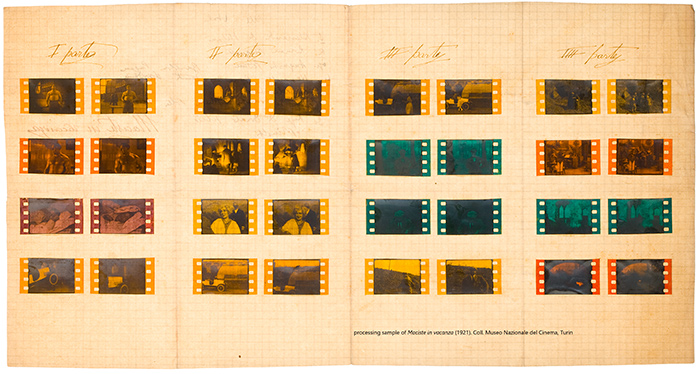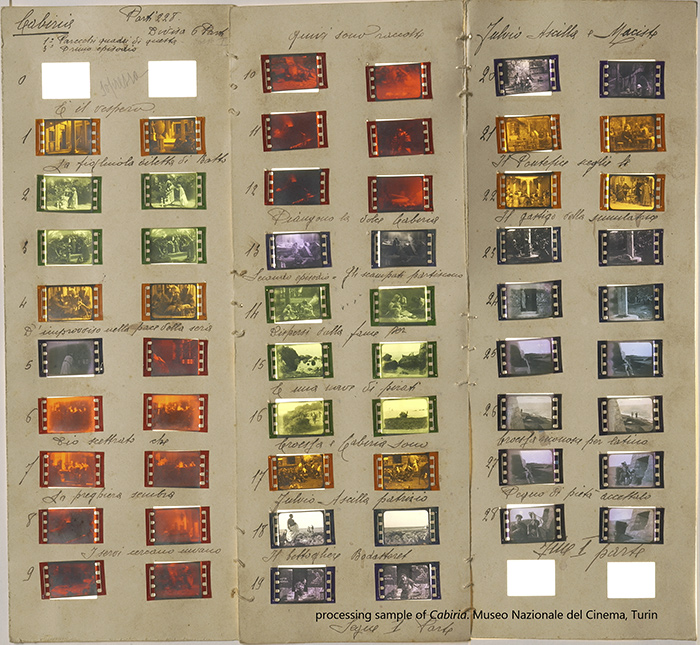< Program < PANEL NO. 1: Film Chemistry, Lab Technique, and Archival Traces
In the 1910s, in Italy, the adjustment of the situation of the film production was displayed also by a more structured subdivision of its production work.
Much remains to be studied and discovered regarding the organization of these first “manufacturing machines,” in particular about the laboratory phase (development, printing, coloring, editing, washing of film), during which the film was handled by dozens of different people, who were defined by an article of the time as the “proletarians of the film.” Even if the Italian situation had nothing to do with the rigid Ford model of the forthcoming Hollywood of the time, the new structures imposed both a new organization and, most importantly, efficient coordination.
Itala Film was one of the most important Italian production companies of that time. At its laboratories, the “working samples” were one of the main tools through which this coordination had to pass. They were sheets of either paper or cardboard on which were applied (sewn or glued) film frames obtained from a positive copy to offer a visual trace of the development of the montage, of the position of the intertitles, and the alternations of tinting and toning. This “trace” of the film had to be used primarily to coordinate the different compartments of what we call today “post-production.”
We aim to examine some aspects of the different phases of the complex laboratory production of the Italian silent cinema through the study and analysis of both the shape and function of the small but precious collection of working samples held at the Museo Nazionale del Cinema of Turin, and part of the documents of the Itala MNC fund.
Moreover, a reflection on the concept of “accidental beauty,” which characterizes materials such as these, should be also added to this analysis. In fact, despite being created for purely practical purposes, today they strike us with their harmony as objects of high craftsmanship, rather than as tools of industrial production.
Stella Dagna (Università degli Studi di Torino)
Stella Dagna, PhD in History of visual arts and plays at the Università di Pisa, has been working at Museo Nazionale del Cinema in Turin for 15 year, dealing primarily with film restoration and Italian silent cinema research. In her career she collaborated at approx a hundred restorations and preservations. In 2010 she participated in the Hagefilm Foundation’s fellowship for film archive professionals at the Cineco lab in Amsterdam. She is the author of Perchè restaurare I film? (ETS, 2014), Ma l’amor mio non muore! La diva e l’arte di comporre lo spazio (Mimesis, 2014) and several essays and articles published in magazines and miscellaneous volumes. She collaborates with the Università degli Studi di Torino.


